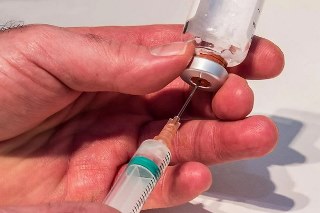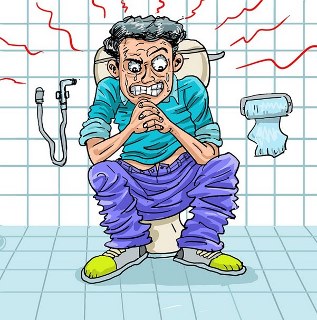Infertility is one of the primary challenges experienced in marriages. It may result from biological factors like genes, hormonal imbalance, diseases, and environmental factors such as exposure to toxins and trauma. Here is a medicine for you that is Clomid.
Therefore, the management of infertility is crucial for the continuity of life and strengthening marital relationships. Effective infertility treatment is now available thanks to the current use of Clomid therapy. Well, some of the most asked questions are what is Clomid, what does Clomid do, how do I take Clomid, and what do I risk when I take Clomid? No need to worry; read on for all the answers.
What Is Clomid?

Clomid or clomiphene citrate is an oral medication in the group of drugs called ovulatory stimulants, often used to treat certain types of female infertility. This medication is vital in correcting impaired ovulation and polycystic ovary syndrome. It comes in a tablet and works to rebalance your hormones, restoring ovulation patterns for better conception chances.
Clomiphene is a non-steroid infertility drug suitable if you do not desire the harmful effects of steroids. Each tablet consists of 50 mg of clomiphene citrate, lactose, sucrose, soluble starch, maize starch, magnesium stearate, iron oxide yellow, and water.
Currently, there are three forms of clomiphene: Serophene, Clomid, and generic clomiphene, available in Clomid 50 mg and 100 mg tablets. Clomid has two distinct isomers: Zuclomiphene, an inert molecule constituting almost one-third of the total drug mass. The second isomer, Enclomiphene, is the active component and fills up the remaining two-thirds.
Clomiphene has a long half-life, meaning it takes longer for the body to eliminate its metabolites. Traces of Clomid molecules are present in the blood several weeks after administration. Because of this effect, clomiphene concentration will rise in the blood over time if you take it for a few months.
How Does Clomid Work?

Clomid modulates estrogen receptors in the hypothalamus, endometrium, cervix, and pituitary gland. The result is stimulation of the pituitary gland to produce more hormones that promote follicular development.
The hormones secreted are called gonadotropins, and there are two essential types: FSH, or follicle-stimulating hormone, and LH, or luteinizing hormone. Both LH and FSH levels are high during clomiphene therapy. Initially, the FSH is more important for oocytes to develop. In the case of pituitary suppression caused by disease or physiological impairment, clomiphene citrate helps restore normal pituitary functions.
Clomiphene For Impaired Ovulation

Women who cannot menstruate at all (those with amenorrhea) do not ovulate as often as women who occasionally menstruate (oligomenorrhea). Also, women with Polycystic Ovary Syndrome do not ovulate regularly. These two situations may contribute to infertility.
However, with clomiphene therapy, patients regain their regular ovulation and menstruation cycles. When taken, Clomid helps your body make more follicle-stimulating hormone (FSH) and luteinizing hormone (LH). Together, these stimulate follicles in your ovaries to develop and help your eggs grow. Therefore, increasing the dose of clomiphene increases the chance of ovulation.
Also, clomiphene increases the chance of conceiving twins by increasing the ovulation rate. Research on the exact relationship between Clomid and twin occurrence is still undergoing, but such cases exist.
Clomiphene In Sperm Synthesis
Clomiphene citrate can help stimulate spermatogenesis. Just like in women, Clomid metabolites stimulate the production of androgens that regulate spermatogenesis, producing large numbers of viable sperms. These applications can help eradicate male infertility.
Generally, clomiphene acts on increasing androgenic hormones that regulate ovulation and spermatogenesis. When taken, screening and monitoring of ovulation and spermatogenesis to adjust the doses appropriately are necessary.
Indications Of Clomiphene Therapy

Research indicates that Clomid may be essential in inducing pregnancy with a six-month live birth rate of about 50 percent. Patients with the polycystic ovarian syndrome will likely benefit from Clomid therapy as standard ovulation patterns are restored.
Also, people suffering from amenorrhea due to secondary causes, amenorrhea galactorrhea, and amenorrhea due to contraceptive use have a high success rate with Clomid therapy. Clomiphene citrate can be a vital therapy in male infertility and insufficient secretion of gonadotropins.
In general, Clomid therapy helps in ovulatory and spermatogenesis induction in patients who suffer from insufficiency. However, it is also helpful in managing hypothyroidism, enhancing performance in athletes, and treating short-lasting unilateral neuralgiform headache attacks.
How Long Does It Take Clomid To Work?
You must not expect to start ovulating on the first day of Clomid therapy. The onset of ovulation may take up to two weeks. Once you take clomiphene, it activates a chain of reactions that involve hormonal secretions, follicular development or spermatogenesis, and excretion (ovulation in females).
The cycle initiated by Clomid metabolites may take three to nine days, but if this doesn’t happen, a change in dosage may be vital after the appropriate screening. Nevertheless, one should not worry as the therapy can be repeated if unsuccessful.
Clomid Dosage
Starting with a small dose of 50 mg, one tablet per day for five days, is crucial. After completing the first therapy set, ovulation should occur in five to nine days. If this change does not happen, repeat therapy is helpful but only with a doctor’s recommendation.
If there is a severe reaction to a drug, one must reduce the dosage or cut off medication until the complications disappear. You should never increase the dosage on your own; a doctor’s consent is necessary to avoid the adverse effects.
Offshoots Of Clomid Therapy

As with any other drug, one must consider Clomid’s side effects before starting therapy. The doctor should take you through all the side effects before drug administration so that you give informed consent. Since many people can acquire Clomid online, they might be tempted to forgo a doctor’s recommendations, and the results may be fatal. So before you buy Clomid, make sure you get a doctor’s advice.
Some noted adverse reactions to Clomid use include headache, worsening of mental conditions, enlarged male breast or gynecomastia, testicular malignancies, gastrointestinal problems, and breast pain.
Other unfavorable reactions are nausea, vomiting, ovarian growth, blurry vision, radiating scotoma, unusual bleeding in the uterus, pain in the pelvis, and hypertriglyceridemia.
Even more severe reactions to clomiphene are ovarian hypersensitivity and multiple conceptions. In addition, Clomid therapy can predispose someone to ovarian cancers.
Where To Get Clomid
If you have been wondering where to buy Clomid, you can buy Clomid online from different online vendors. For Canadians, you can search Clomid Canada or Clomid in Canada to get your deliveries from online stores. You can also buy Clomid Canada from licensed stores in different parts of Canada.
Conclusion
Controlled use of clomiphene is essential in restoring fertility in both men and women by stimulating ovulation and spermatogenesis. However, a few side effects may occur, and it is crucial to modulate therapy according to contraindications and drug interactions to resolve these effects.
References
https://www.ncbi.nlm.nih.gov/books/NBK559292/
https://www.forbes.com/health/family/what-is-Clomid/
https://www.researchgate.net/publication/326563955_Clomiphene_citrate_the_changing_landscape
https://www.sciencedirect.com/topics/medicine-and-dentistry/clomifene


 UPDATED November 18th, 2025
UPDATED November 18th, 2025